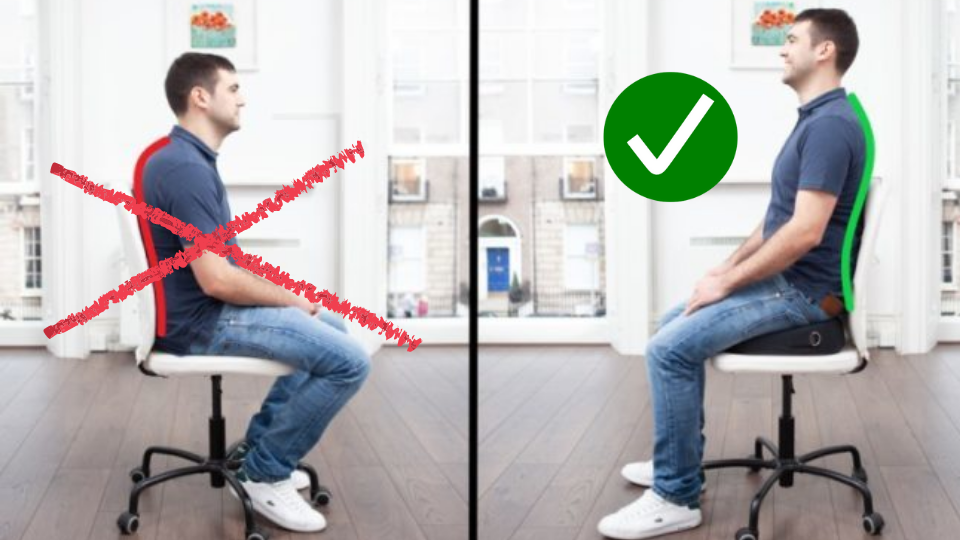Spondylolisthesis is a condition where one vertebral body in the spine slips out of place onto the vertebral body below it. It can cause discomfort and pain, especially when sitting. However, with the right posture and techniques, you can reduce the stress on your spine and alleviate the symptoms. Here’s how to sit properly when you have spondylolisthesis:
Choose a chair with good lumbar support:
A chair with a built-in lumbar support can help keep the natural curve of your lower back. Look for chairs that can be adjusted to fit your body, such as those with height-adjustable backrests and tilt functions.
Sit with a straight back:
Sit with your back straight, your shoulders relaxed, and your feet flat on the floor. Try to avoid slouching or hunching over, as this puts added pressure on your lower back.
Use a cushion:
A cushion or small pillow placed in the small of your back can help maintain the natural curve of your spine and reduce pressure on the affected vertebral level.
Avoid crossing your legs:
Crossing your legs while sitting can twist your spine and put added pressure on your lower back. Instead, keep both feet flat on the floor.
Get up and move regularly:
Sitting in the same position for long periods can increase the stress on your spine. Try to get up and move every 30 minutes to an hour.
How can I alleviate pain caused by spondylolisthesis?
There are several ways to alleviate pain caused by spondylolisthesis:
- Physical therapy: Specific exercises can help strengthen the muscles in the back and abdomen, which can help alleviate pain and improve posture.
- Pain medications: Over-the-counter pain relievers, such as ibuprofen, or prescription pain medications can be effective in reducing pain.
- Heat and cold therapy: Alternating heat and cold therapy can help reduce pain and inflammation.
- Chiropractic care: Chiropractors can help realign the spine, which can alleviate pressure on the nerve roots and reduce pain.
- Bracing: Wearing a back brace can help stabilize the spine and reduce pain.
Is it okay to exercise with spondylolisthesis?
Yes, it is okay to exercise with spondylolisthesis, but it is important to choose exercises that are safe and do not put unnecessary strain on the spine. Gentle exercises, such as walking, swimming, and yoga, can help improve flexibility, strengthen the muscles, and alleviate pain.
What is the best way to sleep with spondylolisthesis?
Sleeping on your back with a pillow under your knees can help reduce pressure on the spine and alleviate pain. Sleeping on your stomach is not recommended as it can increase the stress on the spine. If you have difficulty sleeping, you may find it helpful to try using a special pillow designed for people with back pain.
How can I improve my posture with spondylolisthesis?
Improving your posture can help alleviate pain and prevent further injury. To improve your posture:
- Stand up straight, keeping your shoulders back and your chest lifted.
- Avoid slouching or slumping when you sit.
- Use a chair with good back support and adjust it so that your feet are flat on the floor.
- Avoid carrying heavy bags on one shoulder.
Can spondylolisthesis be treated without surgery?
Yes, spondylolisthesis can often be treated without surgery. Conservative treatments, such as physical therapy, pain medications, and bracing, can be effective in reducing pain and improving mobility. If these treatments are not effective, surgery may be recommended. It is important to discuss your options with your doctor to determine the best course of treatment for you.
